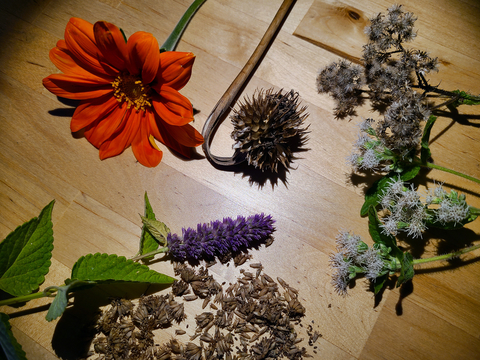Collecting and storing seed
UNIVERSITY OF MINNESOTA EXTENSION - www.extension.umn.edu
Flowers, seeds and seed heads from Tithonia, anise hyssop and boneset (L-R).
Fall is a good time for collecting seed in Minnesota from plants that are summer bloomers.
Seed can be collected from a variety of different plants, even some of our larger woody plants like trees and shrubs. Seed will come true from some species and seed collected from hybrids will result in a variety of different, sometimes surprising, plants.
Collect seed by harvesting nuts, berries, catkins, pods, seedheads, cones, etc., about two months after flowering from healthy and vigorous plants.
- Collect plant parts on a dry day and let dry in a warm, still location, like on a sunny window sill.
- Mold and mildew are the biggest problem with seed collecting, so be sure the seeds dry well.
- You can also hang branches of flowers in a paper bag and allow the seeds to drop into the bag as the flower heads dry.
- As you collect the seed, place them in an envelope and label them clearly. Store the envelopes in a sealed container. Include a few silica desiccant packets to absorb any remaining moisture.
- Some seeds, like magnolia, should be stored in damp peat moss or vermiculite in a plastic bag.
- Store collected seeds in the refrigerator (about 41 degrees F).
Find out more about collecting and storing seed from the Royal Horticultural Society article Seed: Collecting and Storing.

